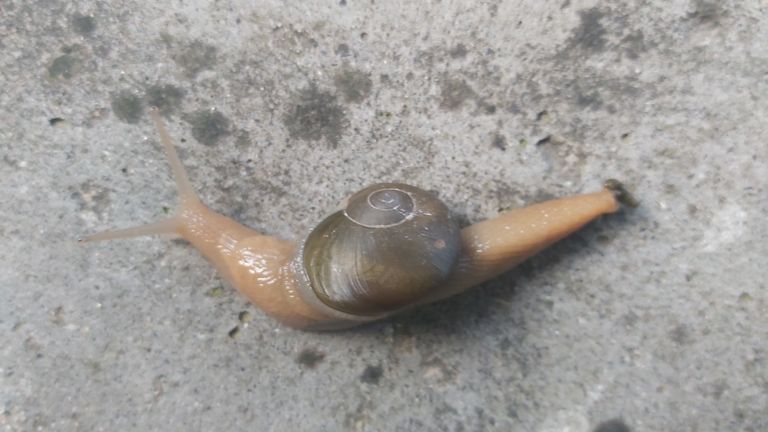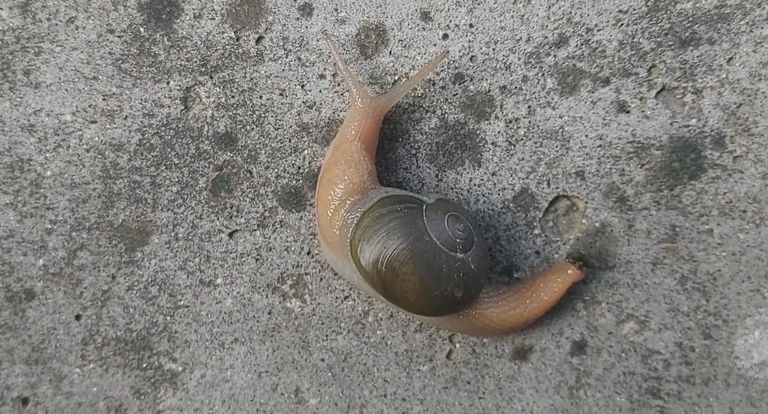These images feature a snail positioned on a rough, possibly concrete surface. The snail's body is elongated and covered in a slimy mucus that aids in its movement and helps prevent it from drying out. Its shell is prominently brown with a distinct spiral pattern, characteristic of many land snails. The shell appears glossy, reflecting light, which indicates it is likely healthy and well-maintained. The snail's tentacles are extended forward, with the longer, upper pair bearing eye spots at the tips, used for sensing its environment. The shorter, lower tentacles are likely used for feeling and tasting as the snail navigates its surroundings.

The concrete surface beneath the snail is rough and speckled, suggesting an urban or suburban environment. Small patches of moss or lichen dot the surface, indicating a certain level of moisture, which is crucial for the snail's survival. The texture of the concrete provides some traction for the snail's foot as it moves.
This snail, like others, plays a vital role in nature by contributing to decomposition and soil health. Its movement and feeding habits help recycle nutrients, improving soil structure and fertility. Additionally, snails serve as a food source for various predators, integrating into the larger ecosystem. The presence of this snail on a concrete surface highlights the adaptability of these creatures, able to thrive in diverse environments, from natural habitats to human-altered landscapes. This adaptability underscores their ecological importance and resilience.
